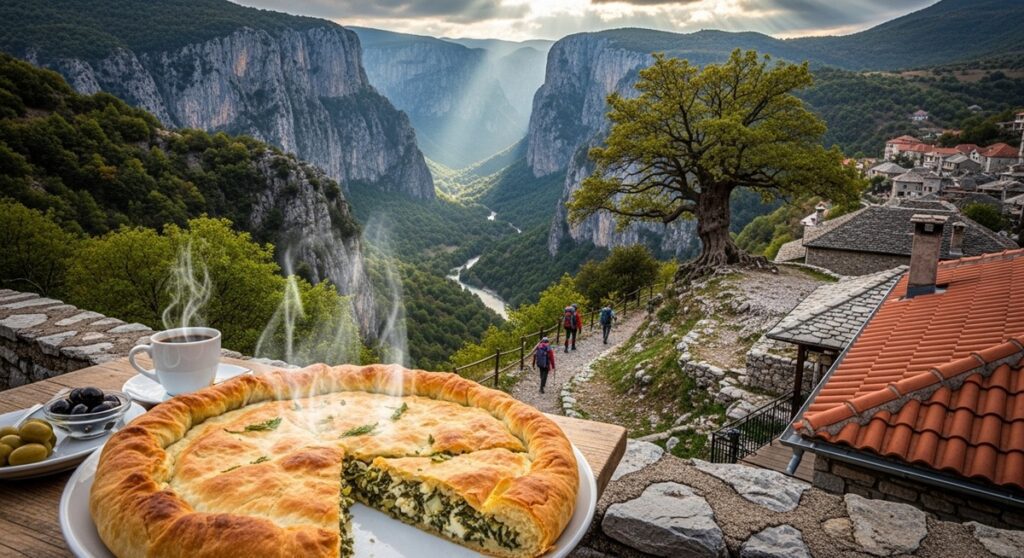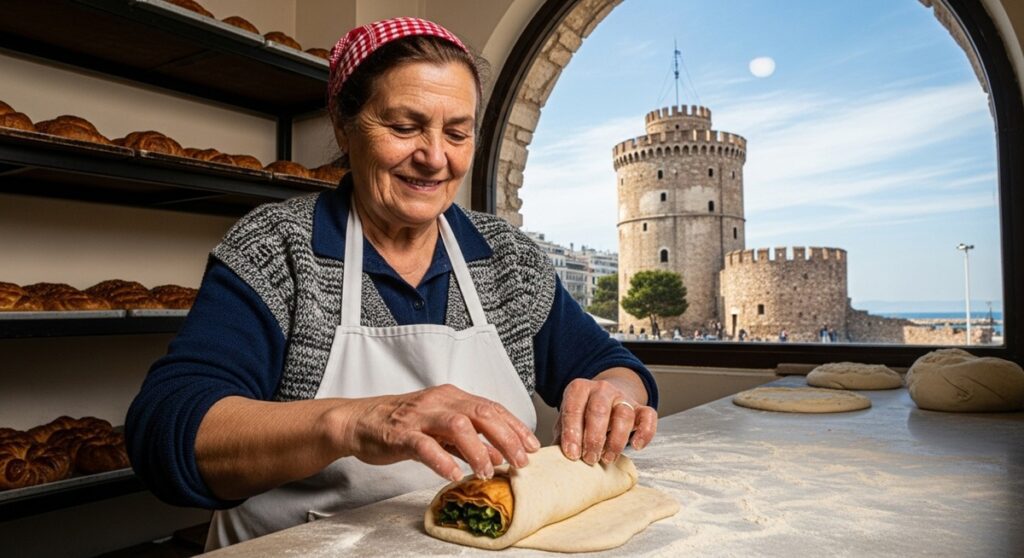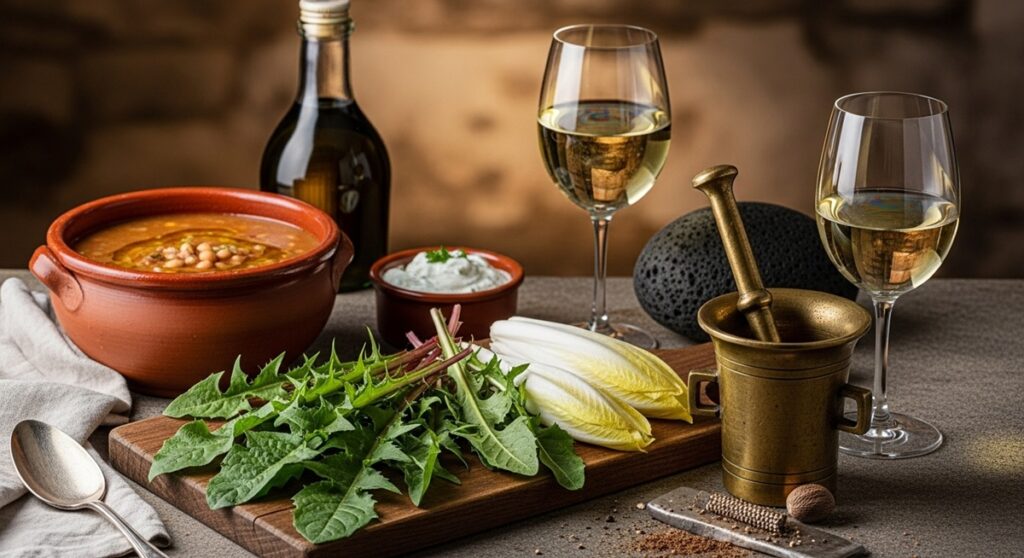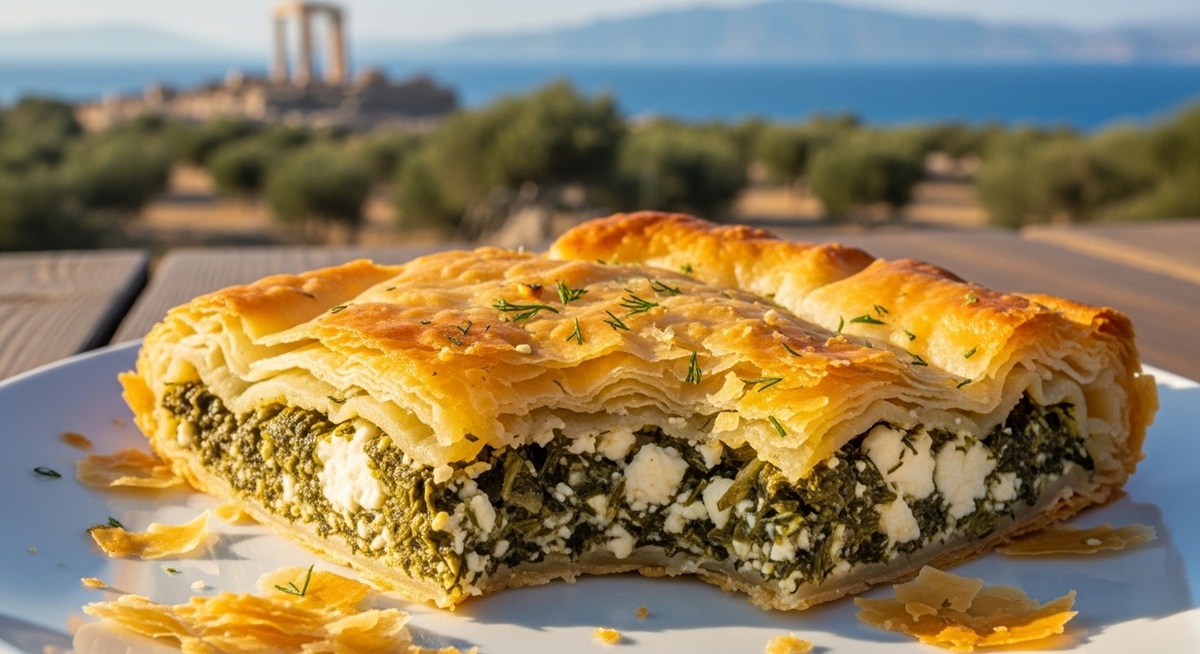Few dishes rustle the secrets of Greece quite like spanakopita, that flaky, golden spinach pie laced with herbs and cheese, a culinary icon that has danced through time from ancient feasts to modern tavernas. It’s not merely a meal; it’s a tapestry woven from the threads of Greek mythology, earthy harvests, and the sun-kissed landscapes that define Greece travel. Imagine biting into layers of crisp phyllo that crackle like autumn leaves, releasing a burst of spinach kissed by feta’s tangy embrace— this is the essence of Greece, a dish that bridges the divine and the daily, inviting travelers to explore its origins not just on the plate, but across the mythical terrains of this storied land.
The Mythical Origins: Demeter’s Bounty and the Eternal Harvest
In the shadowed groves of ancient Greece, where myths were born from the soil, spanakopita finds its deepest roots in the tales of Demeter, the goddess of agriculture and the harvest. Demeter, heartbroken over the abduction of her daughter Persephone by Hades, wandered the earth, withholding her gifts until the world turned barren. It was in Eleusis, near Athens, that she revealed the mysteries of grain and growth, teaching mortals to honor the earth with offerings of bread, cakes, and herb-filled pies. These ancient precursors to spanakopita—mixtures of wild greens, cheeses, and dough—were sacred tributes, symbolizing the cycle of life, death, and rebirth that Persephone embodied each spring.
Picture the Eleusinian Mysteries, secretive rites where initiates consumed kykeon, a barley-based potion, alongside simple pies made from foraged greens. Though spinach arrived in Greece via the Arabs in the Middle Ages, the concept of encasing nature’s bounty in dough harks back to these rituals. Travelers today can walk in Demeter’s footsteps at the Sanctuary of Demeter and Persephone in Eleusis, a short drive from Athens. Here, amid crumbling ruins under the Attic sun, you might pause at a nearby taverna for a slice of spanakopita, feeling the goddess’s presence in every herbaceous bite. This blend of Greek mythology and Greece travel transforms a simple visit into a profound pilgrimage, where the pie becomes a modern offering to the ancient earth mother.

But Demeter isn’t alone in this narrative. Artemis, the huntress goddess, roamed the wilds foraging for greens, her domain echoing in the mountain pies of northern Greece. Or consider Dionysus, god of wine and revelry, whose festivals featured communal feasts of layered pastries, precursors to the phyllo masterpieces we savor now. These myths are alive in the landscapes you’ll explore, turning every Greek tourism itinerary into a mythical quest flavored with spinach and myth.
Regional Twists: How Geography Shapes the Pie
Greece’s rocky terrain— from misty mountains to azure islands— has sculpted spanakopita into a mosaic of regional variations, each telling a story of local soil, climate, and lore. In the north, where the gods of Olympus were said to dwell, pies take on a hearty persona, mirroring the resilience of the land.
Epirus: Wild Greens from the Realm of Zeus
Burrowed in the Pindus Mountains, Epirus is a realm where spanakopita reigns supreme, infused with wild greens like nettles and sorrel gathered from slopes that once thundered with Zeus’s lightning. Mythology paints Epirus as the gateway to the underworld, home to the Oracle of Dodona where priests interpreted the rustle of oak leaves as divine whispers. Today, in villages like Metsovo or Zagori, bakers craft grand, round pies in clay ovens, layering phyllo with foraged herbs that evoke Demeter’s wild bounty.

For Greece travel enthusiasts, a hike through the Vikos Gorge— dubbed the Grand Canyon of Europe— pairs perfectly with a stop at a local kafenio for spanakopita. Imagine emerging from the gorge’s depths, where legends say Persephone descended to Hades, only to ascend to a table laden with pie. This is communing with the myths, where the pie’s earthy flavors ground you in the eternal cycle of nature. Epirus’s version, often bulked with leeks and mountain cheeses, offers a robust contrast to lighter coastal takes, making it a must for those seeking authentic Greek tourism off the beaten path.
The Islands: Sea-Kissed Herbs and Poseidon’s Domain
Venture to the Cyclades or the Dodecanese, domains of Poseidon, where the sea god’s trident stirs waves that lap at herb-strewn shores. Here, spanakopita incorporates fresh mint, fennel, or even sea samphire, herbs that flourish in the salty breezes, echoing the myths of nymphs and sea sprites who tended underwater gardens.

On Santorini, born from volcanic fury akin to Hephaestus’s forge, taverns in Oia serve spanakopita with a view of the caldera, where Atlantis legends swirl like the pie’s filling. Pair it with a sunset stroll to the ruins of Ancient Thera, feeling the gods’ gaze as you savor the flaky delight. In Crete, the birthplace of Zeus, mountain villages like Anogia offer handheld spanakopita variants, stuffed with local greens and myzithra cheese, ideal for picnics amid the Minoan palaces of Knossos. These islands weave Greek mythology into every meal, turning Greece travel into a sensory odyssey where the pie becomes a bridge between ocean myths and terrestrial tastes.
Northern Greece: Hearty Pies from the Lands of Alexander
In Macedonia and Thrace, where Alexander the Great drew his strength from the fertile plains, spanakopita adopts a rustic guise, often wrapped in handmade dough rather than store-bought phyllo. These regions, steeped in tales of the Muses and Mount Olympus, produce pies that are thicker, more substantial, perfect for the cooler climes.

Thessaloniki, the vibrant northern hub, buzzes with bakeries where spanakopita vies with bougatsa for breakfast supremacy. Wander the city’s Byzantine walls, remnants of an era when gods and emperors mingled, then duck into a spot near the White Tower for a slice. For a deeper dive, head to Vergina, site of Philip II’s tomb, and sample pies in nearby villages— a fusion of history and hearth that elevates Greek tourism to epic proportions.
Mythical Journeys: Top Destinations to Savor Spanakopita
To truly immerse in spanakopita‘s temptation, lace your Greece travel with stops that marry mythology and munching. Athens, cradle of democracy and home to the Acropolis where Athena gifted the olive tree, brims with bakeries in Psyrri and Monastiraki. Here, amid the Parthenon’s shadow, grab a modern twist on the pie— perhaps infused with truffle or artichoke— while pondering Athena’s wisdom over Demeter’s harvest.
Delphi, the navel of the world where Apollo’s oracle spoke truths, offers spanakopita in mountain-side eateries overlooking the sacred valley. The pie’s greens seem to draw from the same earth that nourished the Pythia’s visions, making every bite a prophetic experience.
In the Peloponnese, Olympia— birthplace of the Olympic Games honoring Zeus— features pies in local tavernas, where athletes once feasted on similar fare. Combine a site tour with a cooking class, blending Greek mythology with hands-on Greek tourism.
Crete’s Lasithi Plateau, dotted with windmills like those in myths of Daedalus, yields spanakopita from farm-to-table spots, tying Icarus’s flight to grounded, green-filled delights.
Bringing the Myth Home: An Authentic Spanakopita Recipe
No exploration of spanakopita is complete without recreating it, channeling Demeter’s nurturing spirit in your kitchen. This recipe, drawn from Epirote traditions, yields a pie that’s golden, crisp, and mythically satisfying.

Ingredients for a Mythical Feast (Serves 8-10)
Gather 1.5 kg of fresh spinach, washed and chopped, symbolizing the earth’s verdant gifts. Add 3 bunches of spring onions, finely sliced, for a sharp nod to wild foraging. Infuse with 1 bunch each of dill, parsley, and mint, chopped— herbs that Artemis might have plucked. Crumble in 500 g of authentic Greek feta and 250 g of anthotyro or ricotta for creaminess. Bind with 4 beaten eggs, 150 ml of extra virgin Greek olive oil (plus extra for brushing), and season with salt and pepper.
For the vessel, procure 15 sheets of phyllo pastry, thin as the veils of nymphs.
Step-by-Step Alchemy: From Filling to Golden Glory
Begin by salting the spinach lightly, letting it wilt for 15 minutes before squeezing out excess moisture— a ritual purge akin to cleansing for ancient rites. In a vast bowl, mingle the greens with onions, herbs, cheeses, eggs, and oil, stirring until it forms a lush, unified mass. Taste and adjust, invoking the balance of the gods.
Preheat your oven to 180°C (350°F), as if stoking Hephaestus’s forge. Oil a spacious baking dish, then layer 7-8 phyllo sheets at the base, brushing each with olive oil to ensure flaky ascension. Spread the filling evenly, like sowing seeds in Demeter’s fields. Crown with the remaining phyllo, tucking edges to seal the treasure within. Score the top into diamonds, a pattern echoing ancient mosaics.
Bake for 60-70 minutes until the surface gleams like Apollo’s chariot. Allow a brief rest, then serve warm, perhaps with a yogurt dip or salad greens.
Enhancements and Mythical Pairings

For an Epirote authenticity, forage or add wild greens like dandelion or chicory. If bold, experiment with a dash of nutmeg, evoking exotic trades in mythic times. Pair with wines: a zesty Assyrtiko from Santorini, where volcanic soils mirror Hephaestus, or a floral Malagousia from the mainland. In summer, accompany with tzatziki; in winter, a hearty bean soup.
Why Spanakopita is a Timeless Greek Embrace
In the end, spanakopita transcends its ingredients, embodying Greece’s soul— a harmonious blend of Greek mythology, resilient traditions, and the warmth of shared tables. It’s the pie that Demeter might offer to weary travelers, a golden emblem of hospitality found in every corner of this enchanted land.
From the misty peaks of Epirus to the sun-drenched isles, each variation invites you to partake in a legacy that’s as eternal as the gods themselves. Whether you’re tracing Persephone’s path in Eleusis, feasting post-hike in Crete, or baking it afar, spanakopita captures the magic of Greece travel and Greek tourism, one flaky layer at a time. It’s not just food; it’s an invitation to live the myth.






















